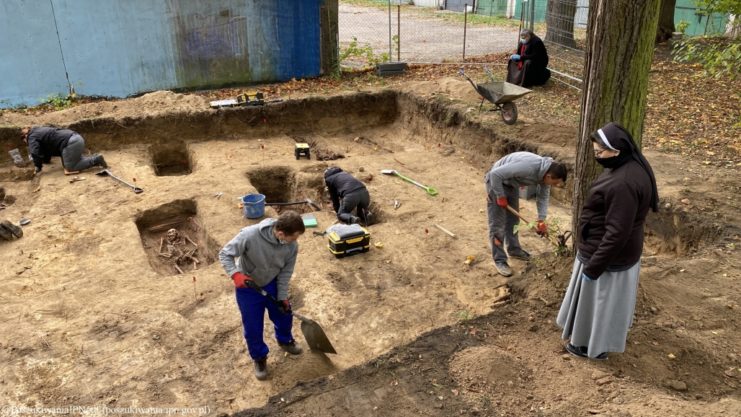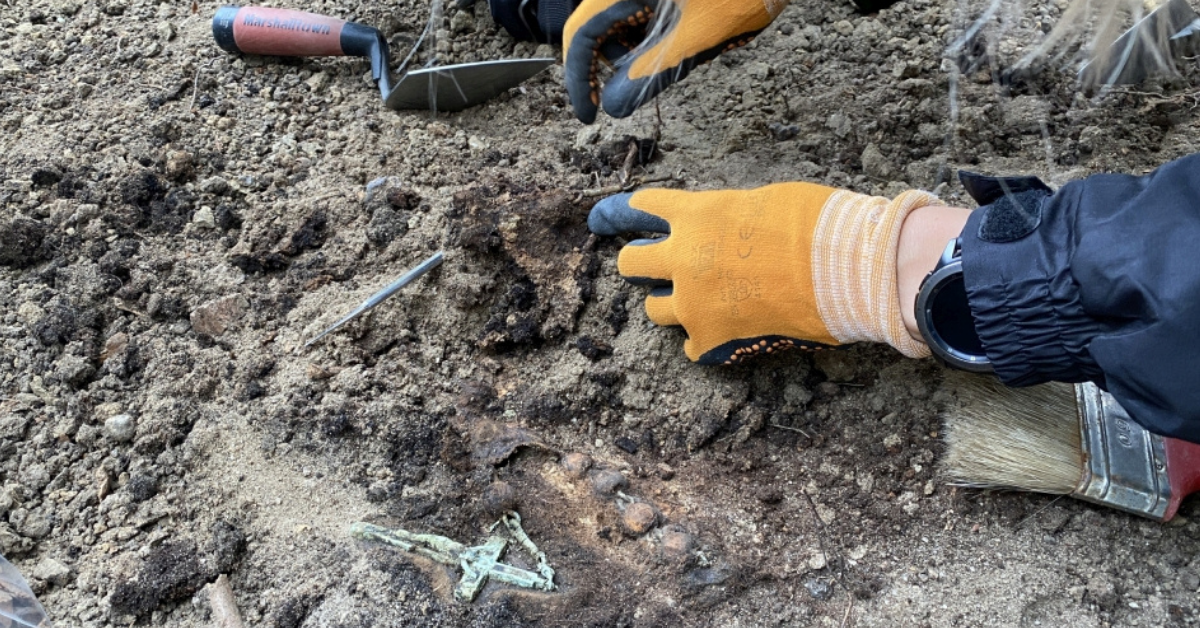As the Wehrmacht retreated in the face of the Soviet Red Army in Poland in 1944, the Polish population might have been forgiven for believing this was an end to years of oppression and violence. But the Red Army began a spree of religious violence, imprisoning priests and clergy, deporting prominent church supporters, and dismantling institutions.
In the city of Olsztyn, the Germans killed more than 5,000 people from 1939 until the Russians arrived in January 1945, at the psychiatric hospital and forced labor camps. The Red Army killed the remaining inpatients at the psychiatric hospital, either shooting them or burning them alive.
Recovering the remains of the murdered nuns
Seven nurses, nuns from the Order of Saint Catherine of Alexandria, were brutally slaughtered by the Soviets and their remains lost to history in amongst the many burials that took place in the neighboring municipal cemetery at Orneta and another in Gdansk. Four of the murdered nuns were found in July 2020 in Gdansk, while the three remaining nuns were discovered by archaeologists in Olsztyn in October 2020.

The team used a hand-drawn burial plan dating from the end of the war, which indicated an area some twenty meters square. The area had been re-dug for later burials, and several bodies had to be disinterred before the nuns could be uncovered.
Remembering the victims
At last, the remains of Sister Generosa (Maria Bolz), Sister Krzysztofora (Marta Klomfass), and Sister Liberia (Maria Domnik) were identified in October 2020, thanks to the religious artifacts, rosaries, medallions, and a metal cross found with the skeletons.
Sister Generosa was born on May 26th, 1902, in Olsztyn, and, following the death of her mother, she joined the Order of Saint Catherine where she trained as a nurse, first at Königsberg and then in her hometown where she led the physiotherapy ward. When the Red Army arrived, Sister Generosa was locked in the attic of the hospital for 10 days where she was systematically abused.
After her release, her health deteriorated and she never recovered, succumbing to her injuries on May 9th after which she was buried next to her colleague Sister Krzysztofora.
Sister Krzysztofora was born on August 19th, 1903, in the city of Raszag and joined the Order of Saint Catherine having already graduated from the nursing school in Königsberg. She served in a number of hospitals and institutions across Poland and arrived in Olsztyn in 1939.
When the Red Army attacked the hospital, she was hiding in a bunker with staff and patients. She lost her life in a grueling and brutal fight with a Soviet soldier who stabbed her with a bayonet 16 times and mutilated her body.
Sister Liberia was born on October 12th, 1904, to a forester and his family in Klewno. As soon as she came of age, she joined the Order of Saint Catherine and began her nursing career in Trzciel. She was a model student, and her positive energy and happy outlook proved an excellent recruiting tool for the order.
She arrived at the hospital in Olsztyn in 1937. When the Red Army arrived, she hid her patients, who were mainly children, in an air raid shelter. When one needed medicine, she left the shelter and was shot dead.
More from us: The Most Important Engine of WW2 – Rolls-Royce Merlin
The Forensic Medicine Institute in Gdansk is working to confirm the identities of all seven murdered nuns to establish beyond doubt the identity of the remains before they are reinterred. Meanwhile, the Catholic Church in Poland has begun the process of beatification for the victims of this Red Army atrocity.
St Mary’s Cemetery was in use from 1878 until 1974, with the last recorded burial taking place in 1951. A plaque of remembrance remains outside the Olsztyn Municipal Hospital in Mariańska Street.
